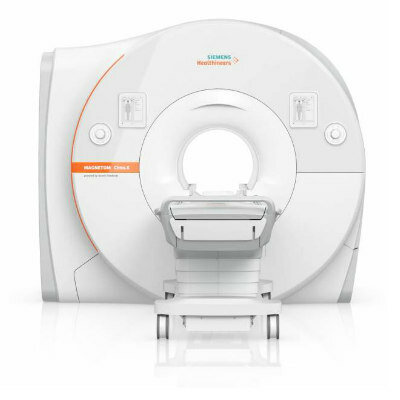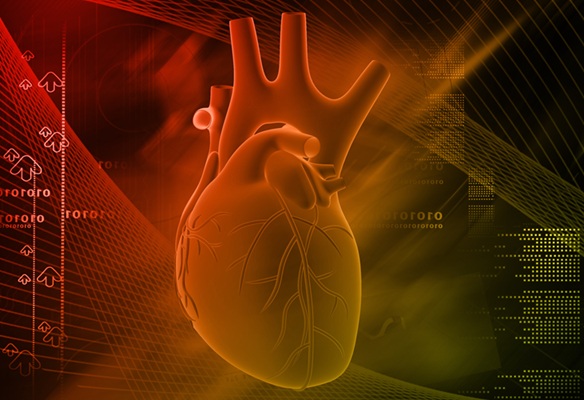Novel Approach Can Identify People with Higher Risk of TB Infection
|
By MedImaging International staff writers Posted on 23 Jan 2024 |

Tuberculosis (TB) is a serious bacterial disease that primarily affects the lungs and can be deadly if left untreated. It spreads through the air when people with TB expel bacteria via droplets. While many individuals who contract TB remain asymptomatic, a small percentage do not control the infection, leading to active disease. Current TB testing methods, such as skin tests or blood tests like the interferon gamma release assay (IGRA), can detect an immune response to TB but fail to differentiate between those at high or low risk of disease progression. This limitation underscores the need for improved testing methods to identify individuals at higher risk of developing TB, allowing for more focused preventative treatment. Researchers have now introduced an innovative approach to studying the progression of TB from infection to disease, identifying and treating individuals at increased risk who might be missed by existing testing methods.
Researchers at the University of Leicester (Leicester, UK) employed PET-CT, an advanced imaging technique, to study how TB infection progresses and to identify individuals at higher risk of developing the disease. This method enabled the team to evaluate a potential new blood test to identify those at higher risk without the need to recruit a large and costly cohort. The study involved 20 adults linked to households of individuals being treated for TB. These participants underwent chest radiography and IGRA screening for TB infection. The research team then utilized two novel methods to monitor disease progression over the next year: PET-CT imaging and a unique bacteriophage-based assay called Actiphage, developed by PBD Biotech (Saskatoon, Canada). Actiphage utilizes bacteriophages, viruses that specifically infect bacterial cells, to target TB bacteria. When the bacteriophage infects TB bacteria, it releases bacterial DNA, which can then be detected, even at very low levels that other clinical tools cannot identify.
All participants in the study were asymptomatic with normal chest X-rays. They first underwent a baseline PET-CT scan. If the scan showed metabolic activity indicative of TB that could be sampled, they underwent bronchoscopy and sampling. Participants without sampleable findings on the initial PET-CT, or with negative sampling results, received a follow-up PET-CT scan after three to four months. Through PET-CT, the researchers identified four individuals from whom TB bacteria were isolated either from the lung airway or from PET-positive lymph nodes. Additionally, two more participants showed progressive changes on the second PET-CT scan. All six individuals received TB treatment, and follow-up PET-CT scans three months post-treatment showed resolving or completely resolved changes, suggesting the PET-CT changes were due to active TB infection.
The Actiphage test results were also promising. The researchers observed a significant correlation between a positive baseline Actiphage test and subsequent treatment for high-risk TB infection features. Actiphage results were positive in 12 (60%) participants at baseline and in all six of the treated PET-CT-positive participants. The study's findings led the researchers to propose that blood biomarkers aimed at detecting bacterial presence could complement existing biomarkers of the host immune response, thus improving the stratification of TB risk in individuals with TB infection.
“Our results are exciting for two reasons. Firstly, they show that PET-CT could be an effective tool for identifying people with higher risk TB infection. This can help us to perform studies to develop new tests and evaluate new treatments, including vaccines more efficiently and at lower cost,” said Dr. Pranabashis Haldar, Clinical Senior Lecturer in Respiratory Medicine at the University of Leicester. “Secondly, our findings suggest that TB bacteria are found in blood more often than has previously been thought and importantly, the presence of the bacteria in blood may be an indicator of uncontrolled or progressive TB infection.”
Related Links:
University of Leicester
PBD Biotech
Latest General/Advanced Imaging News
- CT Colonography Beats Stool DNA Testing for Colon Cancer Screening
- First-Of-Its-Kind Wearable Device Offers Revolutionary Alternative to CT Scans
- AI-Based CT Scan Analysis Predicts Early-Stage Kidney Damage Due to Cancer Treatments
- CT-Based Deep Learning-Driven Tool to Enhance Liver Cancer Diagnosis
- AI-Powered Imaging System Improves Lung Cancer Diagnosis
- AI Model Significantly Enhances Low-Dose CT Capabilities
- Ultra-Low Dose CT Aids Pneumonia Diagnosis in Immunocompromised Patients
- AI Reduces CT Lung Cancer Screening Workload by Almost 80%
- Cutting-Edge Technology Combines Light and Sound for Real-Time Stroke Monitoring
- AI System Detects Subtle Changes in Series of Medical Images Over Time
- New CT Scan Technique to Improve Prognosis and Treatments for Head and Neck Cancers
- World’s First Mobile Whole-Body CT Scanner to Provide Diagnostics at POC
- Comprehensive CT Scans Could Identify Atherosclerosis Among Lung Cancer Patients
- AI Improves Detection of Colorectal Cancer on Routine Abdominopelvic CT Scans
- Super-Resolution Technology Enhances Clinical Bone Imaging to Predict Osteoporotic Fracture Risk
- AI-Powered Abdomen Map Enables Early Cancer Detection
Channels
Radiography
view channel
AI Detects Fatty Liver Disease from Chest X-Rays
Fatty liver disease, which results from excess fat accumulation in the liver, is believed to impact approximately one in four individuals globally. If not addressed in time, it can progress to severe conditions... Read more
AI Detects Hidden Heart Disease in Existing CT Chest Scans
Coronary artery calcium (CAC) is a major indicator of cardiovascular risk, but its assessment typically requires a specialized “gated” CT scan that synchronizes with the heartbeat. In contrast, most chest... Read moreMRI
view channel
New MRI Technique Reveals Hidden Heart Issues
Traditional exercise stress tests conducted within an MRI machine require patients to lie flat, a position that artificially improves heart function by increasing stroke volume due to gravity-driven blood... Read more
Shorter MRI Exam Effectively Detects Cancer in Dense Breasts
Women with extremely dense breasts face a higher risk of missed breast cancer diagnoses, as dense glandular and fibrous tissue can obscure tumors on mammograms. While breast MRI is recommended for supplemental... Read moreUltrasound
view channel
Wireless Chronic Pain Management Device to Reduce Need for Painkillers and Surgery
Chronic pain affects millions of people globally, often leading to long-term disability and dependence on opioid medications, which carry significant risks of side effects and addiction.... Read more
New Medical Ultrasound Imaging Technique Enables ICU Bedside Monitoring
Ultrasound computed tomography (USCT) presents a safer alternative to imaging techniques like X-ray computed tomography (commonly known as CT or “CAT” scans) because it does not produce ionizing radiation.... Read moreNuclear Medicine
view channel
Novel Bacteria-Specific PET Imaging Approach Detects Hard-To-Diagnose Lung Infections
Mycobacteroides abscessus is a rapidly growing mycobacteria that primarily affects immunocompromised patients and those with underlying lung diseases, such as cystic fibrosis or chronic obstructive pulmonary... Read more
New Imaging Approach Could Reduce Need for Biopsies to Monitor Prostate Cancer
Prostate cancer is the second leading cause of cancer-related death among men in the United States. However, the majority of older men diagnosed with prostate cancer have slow-growing, low-risk forms of... Read moreImaging IT
view channel
New Google Cloud Medical Imaging Suite Makes Imaging Healthcare Data More Accessible
Medical imaging is a critical tool used to diagnose patients, and there are billions of medical images scanned globally each year. Imaging data accounts for about 90% of all healthcare data1 and, until... Read more
Global AI in Medical Diagnostics Market to Be Driven by Demand for Image Recognition in Radiology
The global artificial intelligence (AI) in medical diagnostics market is expanding with early disease detection being one of its key applications and image recognition becoming a compelling consumer proposition... Read moreIndustry News
view channel
GE HealthCare and NVIDIA Collaboration to Reimagine Diagnostic Imaging
GE HealthCare (Chicago, IL, USA) has entered into a collaboration with NVIDIA (Santa Clara, CA, USA), expanding the existing relationship between the two companies to focus on pioneering innovation in... Read more
Patient-Specific 3D-Printed Phantoms Transform CT Imaging
New research has highlighted how anatomically precise, patient-specific 3D-printed phantoms are proving to be scalable, cost-effective, and efficient tools in the development of new CT scan algorithms... Read more
Siemens and Sectra Collaborate on Enhancing Radiology Workflows
Siemens Healthineers (Forchheim, Germany) and Sectra (Linköping, Sweden) have entered into a collaboration aimed at enhancing radiologists' diagnostic capabilities and, in turn, improving patient care... Read more

















.jpeg)



